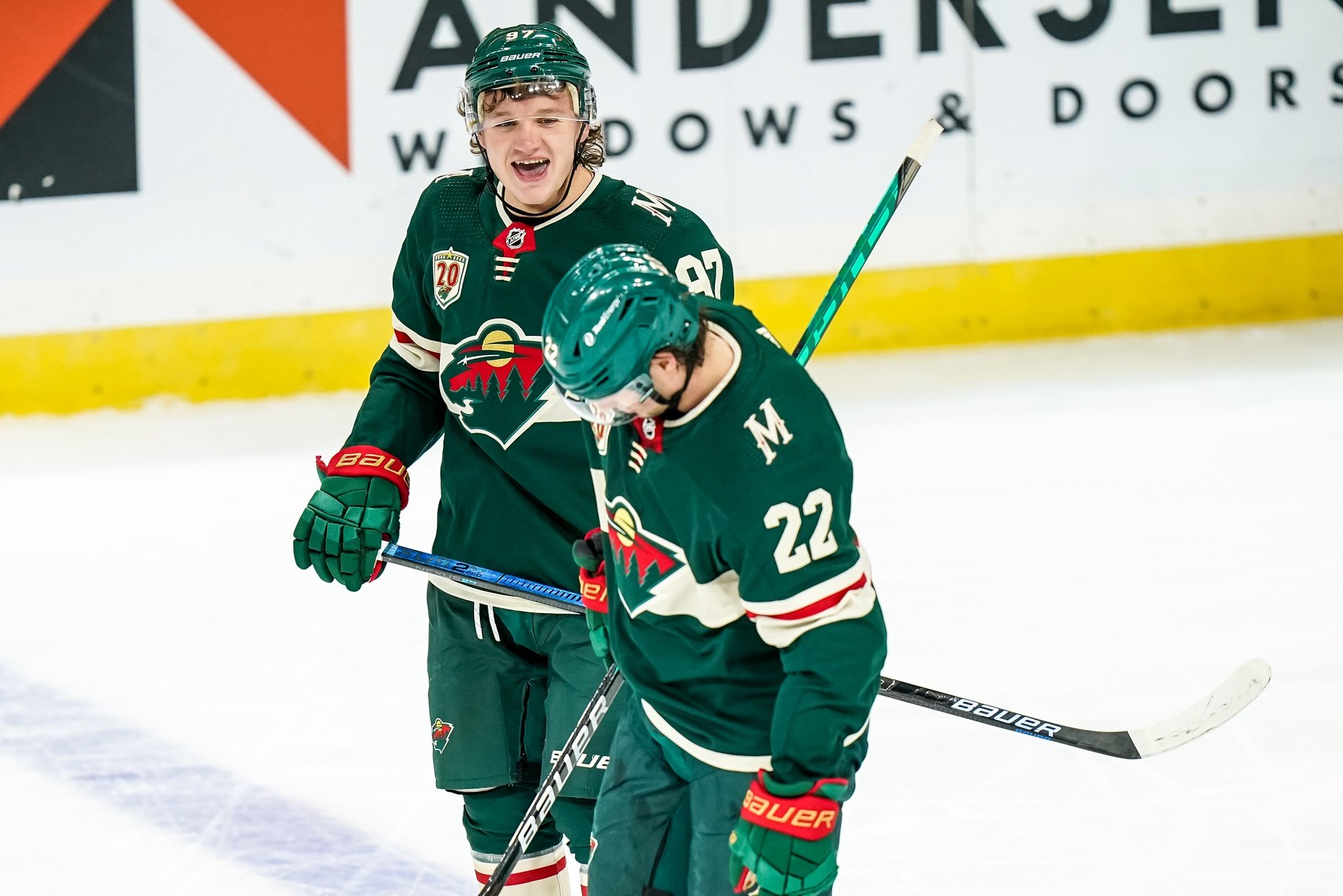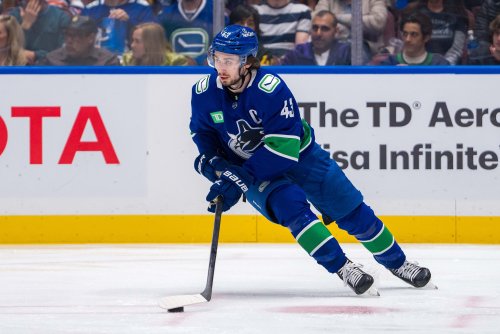
It’s been nearly a month since the Minnesota Wild shocked the world and bought out Zach Parise and Ryan Suter. Ever since the bold moves by general manager Bill Guerin, the Wild’s future has had dark clouds on the horizon. Over $42 million of dead cap hit will pin Minnesota against the salary cap between the 2022-23 and 2024-25 seasons.
True, they were scheduled to be on the hook for those contracts anyway. Their twin $7-plus-million cap hits were always going to put the squeeze on the Wild’s future, right?
Not necessarily. Before the buyouts, one could wave off Minnesota’s future cap squeeze by assuming one or both would eventually get shuffled to the LTIR list. Once there, their cap hit would disappear, allowing the Wild to magically get cap flexibility.
But the dreams of them going the way of Marian Hossa weren’t meant to be. Maybe they were always unrealistic. Parise or Suter both seem like the kinds of players who would have to be dragged off the ice kicking and screaming. And with how things ended with Parise, he perhaps wouldn't feel inclined to grant the Wild any favors.
Whatever may have been possible before is moot. This is the future Minnesota’s got to deal with. There are only two questions to answer now.
The first is: “Can they compete despite working with a salary cap that’s effectively $15 million lower than the rest of the NHL?”
Guerin believes so. The day of the buyouts, he told The Athletic, “We’ve planned out for all that stuff. ... Those years will be tough, but we’re going to have to do a very good job of [drafting, developing, and injecting] some younger, cheaper players into our lineup.”
In other words, they’ll need Matt Boldy, Marco Rossi, and Calen Addison to thrive on entry-level contracts starting next year. Then after that, the next wave of prospects must step in to fill more gaps.
There will be gaps, too. Starting next season, two key bottom-six contributors in Jordan Greenway and Nico Sturm will need raises. On defense, Alex Goligoski and Jon Merrill will re-enter free agency. Minnesota will have $42.7 million committed to just 10 players -- and this is before Kirill Kaprizov and Kevin Fiala’s contracts come in. They’ll likely need to backfill all those spots with prospects or on a shoestring budget.
The year after that (2023-24), Matt Dumba and Cam Talbot will hit UFA status. If Fiala signs a two-year deal in arbitration, he’ll join them.
Luckily, Minnesota has a loaded farm system. Hockey Prospecting projects their prospect pool to produce 2.7 stars and 10 NHL players. But will that bear out? Who knows. And even if there are three stars and 10 players in Minnesota’s system, when will they be NHL-ready? It can take years for prospects to acclimate and adjust to the league, even very good ones.
And that’s just one tightrope Minnesota will have to walk these next four years. For example, if there are injuries to any crucial players -- Joel Eriksson Ek, Jared Spurgeon, Jonas Brodin, for example -- they can’t replace them. Should the 34-year-old Talbot suffer a massive decline, they can’t afford to bring in someone to stabilize the net. If Kaprizov and/or Fiala don’t remain with the team, their star prospects will have to be great just to bring them back to Square One.
If Minnesota wants to compete, everything has to go right. One injury, bad signing, and miscalculated trade could send the Wild spiraling into a familiar irrelevance.
So, yes, if the prospects are great, and they can add the right low-priced pieces around them and make the right calls on who stays and who goes, Minnesota can compete.
The bigger question is: “Should they try competing when their salary cap is effectively $15 million less than everyone else?”
It’s hard to say. Last season saw so many things come together for the Wild. Kaprizov was a star, Fiala continued scoring at a 30-plus-goal pace, and Eriksson Ek added goal-scoring to his repertoire. Those players propelled Minnesota to the playoffs for the first time in three seasons. The hope was Minnesota would build on that this offseason.
But late in the offseason, that’s not the case. As 10K Rinks wrote earlier this month, the Wild have just treaded water, at best. Even that’s an optimistic take -- The Athletic’s Dom Luszczyszyn projects Minnesota as losing 2.5 wins this offseason. That gets worse if the Wild allow Kaprizov to go to Russia or if they trade Fiala.
Remember, this is the season where Minnesota actually saved $10 million from the buyouts. If the Wild are struggling to improve during the easiest part of this buyout period, what happens when the difficulty cranks to 11?
So as much as it’d hurt to see the rug get pulled out from under this budding young core, why try threading a nearly impossible needle?
If Minnesota wanted to fold their hand and enter another mini-rebuild, they’d be well-equipped to do so. Instead of trying to parlay Fiala into a fully-developed NHL center, they can likely get better value trading him for futures. Imagine what a contending team might pay for a 24-year-old star in Kaprizov. They can then use their newly-freed cap space to acquire bad contracts for more picks and prospects. As long as they expire before summer 2025, who cares?
It’s not even like Wild fans would have to sit through miserable hockey while this happens. Eriksson Ek, Spurgeon, Brodin, and Marcus Foligno will surely keep Minnesota from bottoming out defensively, preventing ugly blowouts. Having Rossi, Boldy, and Addison ready to develop with big minutes right away gives the State of Hockey enough of a glimpse of a bright future to buy into a rebuild.
Then in the worst of the buyout years, they could bring in and develop that next wave, eventually working in guys like Adam Beckman, Carson Lambos, and Jesper Wallstedt. All the while, they’d have super scout Judd Brackett doing his thing with extra draft picks.
With the combination of young players and picks Guerin could amass, what couldn’t they do in four years? By 2025, they should have a strong core of under-25 NHLers, a still-robust prospect system, and tons of cap space. Whatever holes they’d need to fill, they’d have the capability to do so. Look how the Vegas Golden Knights were able to weaponize their prospect capital and acquire players like Mark Stone and Max Pacioretty.
Sure, it’s not a foolproof plan. Things would still have to go right. Guerin would have to get solid returns in trades, and Brackett would have to continue his draft success. But what track record would you rather put your trust in? Brackett’s history with top-10 picks, or the success rate of teams forced to operate near the salary cap floor?
That’s the crossroads the Wild stand at today. They can decide to try swimming upstream, running a high risk of being overtaken by the current of the buyouts. Or they can step back, use their time in cap hell to stockpile assets, then strike once the waters are calm. The former is likely futile, while the latter can easily set them up for long-term success. So why not take the opportunity to turn dead cap lemons into Stanley Cup lemonade?
Think you could write a story like this? Hockey Wilderness wants you to develop your voice, find an audience, and we'll pay you to do it. Just fill out this form.







Recommended Comments
There are no comments to display.
Join the conversation
You can post now and register later. If you have an account, sign in now to post with your account.
Note: Your post will require moderator approval before it will be visible.